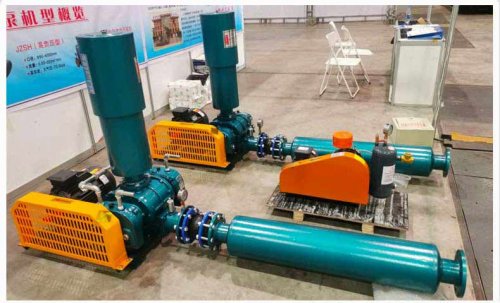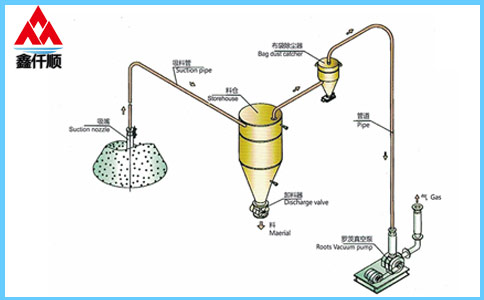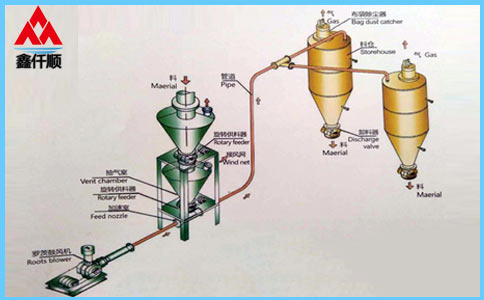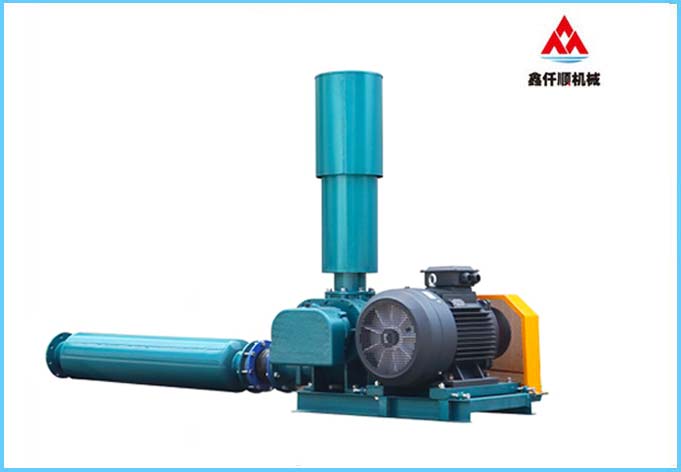The working principle of the centrifugal blower is similar to that of the centrifugal fan, except that the air compression process is usually carried out by several working impellers (or stages) under the action of centrifugal force.
The blower has a rotor that rotates at a high speed. The blades on the rotor drive the air to move at a high speed. The centrifugal force makes the air flow to the fan outlet along the involute in the involute shaped casing. The high-speed air flow has a certain air pressure. The fresh air enters and replenishes from the center of the casing.
The working principle of single-stage high-speed centrifugal fan is that the prime mover drives the impeller to rotate at a high speed through the shaft. The air flow enters the high-speed rotating impeller from the inlet axial direction and becomes radial flow, which is accelerated, then enters the diffuser chamber, changes the flow direction and decelerates. This deceleration effect converts the kinetic energy in the high-speed rotating air flow into pressure energy (potential energy), Keep the fan outlet at a stable pressure.
Theoretically, the pressure flow characteristic curve of the centrifugal blower is a straight line. However, due to the friction resistance and other losses inside the blower, the actual pressure and flow characteristic curve drops gently with the increase of flow, and the corresponding power flow curve of the centrifugal blower rises with the increase of flow. When the fan operates at a constant speed, the operating point of the fan will move along the pressure flow characteristic curve. The operating point of the fan depends not only on its own performance, but also on the characteristics of the system. When the resistance of the pipe network increases, the pipeline performance curve will become steeper. The basic principle of fan regulation is to obtain the required working conditions by changing the performance curve of the fan itself or the characteristic curve of the external pipe network.

Although the centrifugal blower with frequency conversion regulation has a wide range of regulation and has significant effect on energy saving, the process system will be limited by the process conditions, with the regulation range of only 80%~100%. When the relative flow changes little, the power consumption difference between the frequency conversion and guide vane regulation modes is not big, so the energy-saving advantages of the frequency conversion regulation mode cannot be shown, This loses the meaning of choosing it. The blower with guide vane adjustment mode can adjust the air volume in a large range (50%~100%) under the condition of maintaining a constant outlet pressure, so as to ensure the stability of dissolved oxygen content in sewage and save energy relatively. Therefore, the high-speed centrifugal fan with guide vane adjustment mode shall be selected as the equipment selection for this project. At the same time, in order to better reflect the energy-saving effect, for high-power centrifugal fans, attention should also be paid to the selection of matching motors. For example, the use of 10kV high-voltage motors will also help reduce energy consumption. Shandong Xinqianshun Machinery Co., Ltd. is a professional Roots blower supplier integrating design, development and sales. The company's products include Roots blower, Roots vacuum pump, centrifugal fan, rotary blower, single-stage high-speed centrifugal blower and countercurrent cooling vacuum pump. It mainly produces Roots blower, which absorbs advanced technology and relies on a new generation of high-efficiency and energy-saving products developed by scientific research institutes. With reasonable structure, small size, high efficiency, low noise, stable operation, long service life, convenient maintenance and other characteristics, it is widely used in sewage treatment, mining, metallurgy, chemicals, building materials, electricity, light industry, flour, aquaculture and other fields. Over the years, it has been well received by users.










